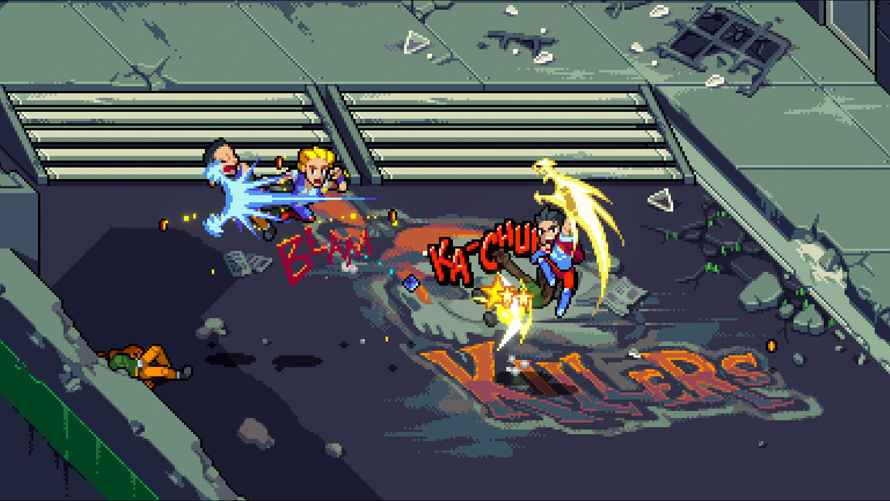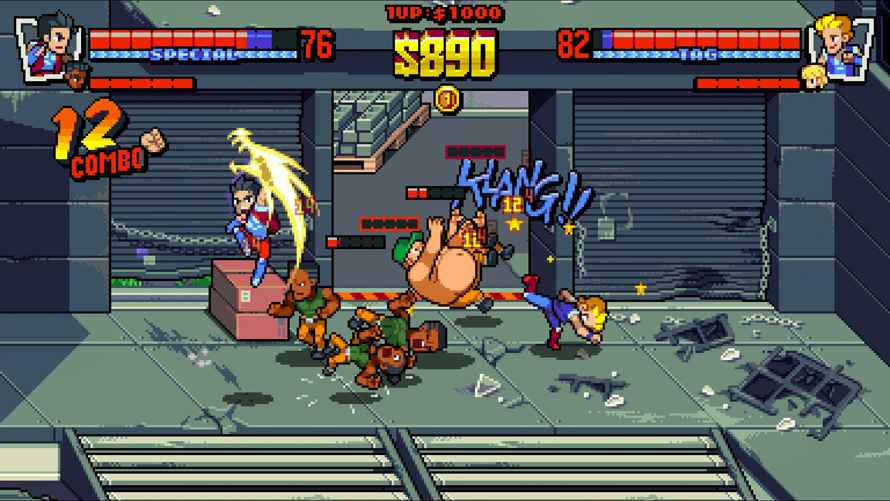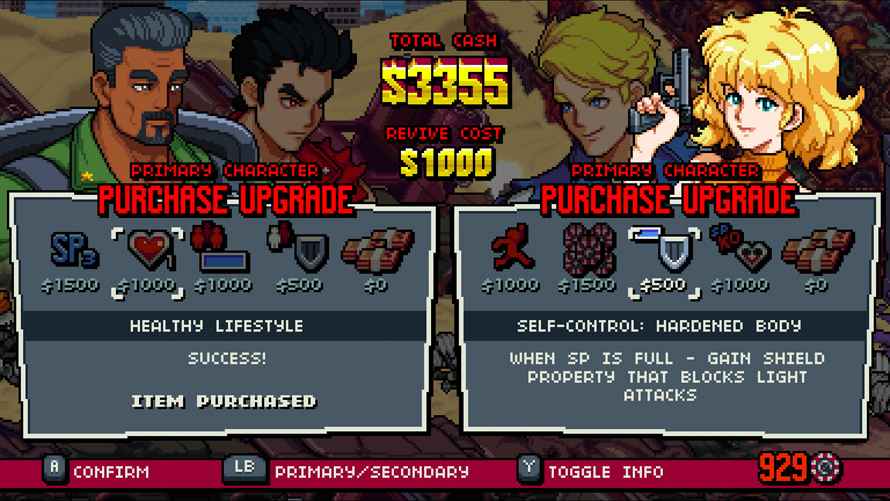Double Dragon Gaiden: Rise of the Dragons Review
There are many adult gamers for whom Double Dragon represents carefree hours in the local arcade, or maybe a happy, simpler time parked in front of their NES. Set aside the fact that many readers weren’t even alive in 1987, almost everyone has heard of the franchise and played some version of the games. Now we have Double Dragon Gaiden: Rise of the Dragons. It’s a recipe combining one part nostalgia and one part recent roguelike mechanics.
Scratch the Nostalgia Itch
The first thing you’ll notice is that Rise of the Dragons does a pretty good job of capturing the look of a classic late-80s, 2D side-scrolling beat ‘em up in all its 8-bit glory. Of course, memory is selective, and Rise of the Dragons has much more sharp detail in its level design. There’s also a lot more interactivity and verticality throughout its four level sequences than in some earlier Double Dragon iterations.
Roguelike mechanics have become both ubiquitous and divisive. They’re an uneasy bolt-on to many game genres. Happily, Double Dragon Gaiden’s roguelike elements feel natural and go a long way to making a very old franchise smell a bit fresher.

Each run begins with the player picking a two-character team, and selecting missions against one of four gangs. There’s no set order in which missions must be completed, and because enemies and other elements are randomized, each run will be slightly different. If the entire team is KO’d, the run is over and any cash is lost. Cash buys upgrades and tokens, used to unlock new characters, music, and art. Tokens are also used to continue a run. Healing and cash are found everywhere, so busting crates and piles of debris pays off. At any point in a run before being KO’d you can cash out and start over.
Teamwork Pays Off
None of those elements are remarkable or unique, but thanks to the escalating challenge and risk/reward calculus of specific teams, the mechanics harmonize and keep things interesting. In plain English, this game gets hard, and the sub-bosses are ass-kicking foes. A strong motivator for continued grinding is unlocking new, playable characters. There are four to begin with: stalwarts Jimmy, Billy, and Marian plus newcomer Uncle Matin. Altogether there are thirteen total characters to choose from.
As the title implies, each player-controlled team consists of two fighters, each with specific strengths, weaknesses, and unique abilities, like Marian’s pistol and massively deadly bazooka. The core strategy of Double Dragon Gaiden is knowing which fighters are best for a mission and when to switch between them in a brawl. Switching back and forth is one-button simple and instant. The interplay of the two characters is the most engaging part of gameplay. None of Double Dragon Gaiden’s character mechanics are that complex on their own. The depth comes from the character combos and finding just the right ones for a level or enemy.

Player Crafting
There are lots of modifiers to help make the game a little less challenging. You can switch between infinite continues to permadeath, and players can tweak the health of enemies and that of the player. You can’t set the exchange rate, however, and the easier the game, the more cash is needed to buy tokens. Once again, Double Dragon Gaiden makes up for gameplay simplicity with other options to add depth.
The game looks and sounds very good. The art is colorful and sharp and the levels are long and filled with enemies and things to break and climb. No one would say that the art is revolutionary. It does a good job of capturing the vibe of early Double Dragon games, and that’s probably enough.

Either alone or with a buddy, Double Dragon Gaiden: Rise of the Dragons is a good time. It updates a decades-old beat ’em up franchise by adding roguelike mechanics that actually harmonize pretty well. The gameplay is accessible but plenty challenging, and the large roster of unlockable characters keeps things interesting.
***PC code provided by the publisher for review***
The Good
- Accessible controls
- Lots of characters to choose from
- Highly replayable
- Attractive retro art
The Bad
- Can be very challenging
- Lacks depth overall

